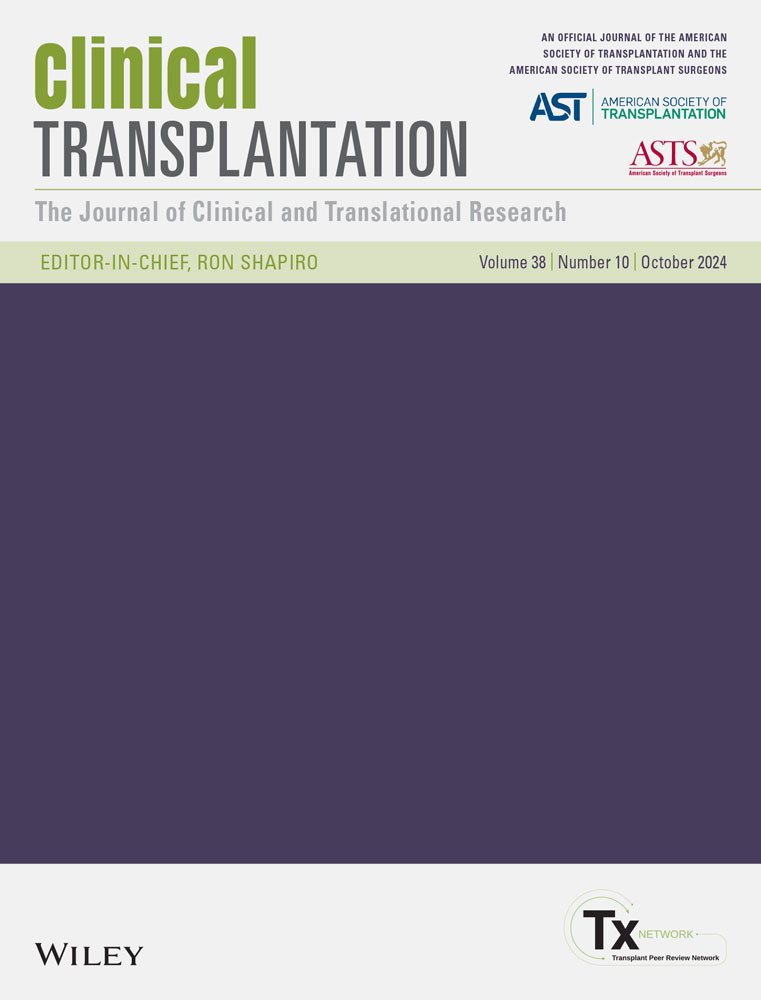Clinical Utility of Donor-Derived Cell-Free DNA in Heart Transplant Recipients With Multi-Organ Transplants
Cathrine M. Moeller, Daniel Oren, Nir Uriel, and Gabriel Sayer are co-first authors and co-senior authors.
Funding: Dr. Clerkin received NIH grant support K23 HL148528 and Nelson Family Faculty Award. Dr. Moeller received grants from ISHLT and CareDx.
ABSTRACT
Background
Donor-derived cell-free DNA (dd-cfDNA) has emerged as a reliable, noninvasive method for the surveillance of allograft rejection in heart transplantation (HT) patients, but its utility in multi-organ transplants (MOT) is unknown. We describe our experience using dd-cfDNA in simultaneous MOT recipients.
Methods
A single-center retrospective review of all HT recipients between 2018 and 2022 that had at least one measurement of dd-cfDNA collected. Patients who had simultaneous MOT were identified and included in this study. Levels of dd-cfDNA were paired with endomyocardial biopsies (EMB) performed within 1 month of blood testing if available. Acute cellular rejection (ACR) was defined as ISHLT (International Society for Heart and Lung Transplantation) grade ≥ 2R. and antibody-mediated rejection (AMR) was defined as pAMR grade > 0. The within-patient variability score of the dd-cfDNA was calculated by the variance/average.
Results
The study included 25 multiorgan transplant recipients: 13 heart–kidney (H-K), 8 heart–liver (H-Li), and 4 heart–lung (H-Lu). The median age was 55 years, 44% were female; the median time from HT until the first dd-cfDNA measurement was 4.5 months (IQR 2, 10.5). The median dd-cfDNA level was 0.18% (IQR 0.15%, 0.27%) for H-K, 1.15% (IQR 0.77%, 2.33%) for H-Li, and 0.69% (IQR 0.62%, 1.07%) for H-Lu patients (p < 0.001). Prevalence of positive dd-cfDNA tests (threshold of 0.20%) were 42.2%, 97.3%, and 92.3% in the H-K, H-Li, and H-Lu groups, respectively. The within-patient variability score was highest in the H-Li group (median of 0.45 [IQR 0.29, 0.94]) and lowest in the H-K group (median of 0.09 [IQR 0.06, 0.12]); p = 0.002. No evidence of cardiac ACR or AMR was found. Three patients experienced renal allograft ACR and/or AMR, two patients experienced rejection of the liver allograft, and one patient experienced an episode of AMR-mediated lung rejection. One person in the H-K group experienced an episode of cardiac allograft dysfunction that was not associated with biopsy-confirmed rejection.
Conclusion
Dd-cfDNA is chronically elevated in most MOT recipients. There is a high degree of within-patient variability in levels (particularly for H-Li and H-Lu recipients), which may limit the utility of this assay in monitoring MOT recipients.
Conflicts of Interest
Dr. Uriel is on the medical advisory board for Livemetric, Leviticus, and Revamp. Additionally, the Advanced Cardiac Care Center at Columbia University Irving Medical Center received grants from Abbott, Abiomed, and CareDx. Dr. Sayer has been a consultant for Abbott and is on the medical advisory board for CareDx. Dr. Clerkin received NIH grant support K23 HL148528 and the Nelson Family Faculty Award. Dr. DeFilippis serves on a clinical trial committee for Abiomed. Dr. Moeller receives a grants from ISHLT and CareDx. All other authors report non-financial contributions or conflicts of interest.
Open Research
Data Availability Statement
Data sharing is not applicable to this article as no new data were created or analyzed in this study.




